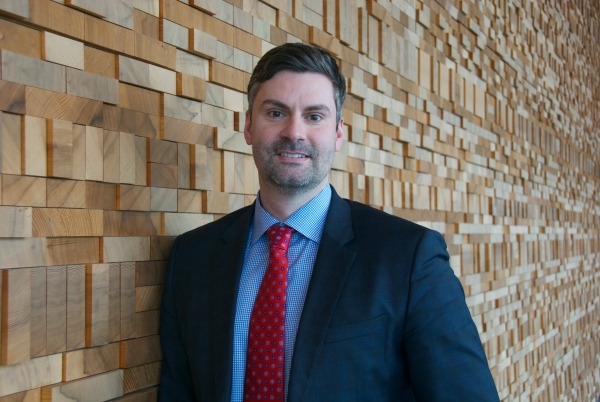
Industry News
News
Breaking down the budget: Q&A with FPAC CEO Derek Nighbor
April 12, 2017 - Canadian Forest Industries caught up with Forest Products Association of Canada (FPAC) CEO Derek Nighbor to hear about the association’s goals after the federal budget was announced in late March.
The budget includes $1.8 billion to support clean technology, $40 million over four years for projects that increase the use of wood in buildings and infrastructure, $5 billion to support improved trade and transportation corridors, and $1.8 billion for programs to support youth employment, post-secondary education placements and Indigenous skills training.
The key going forward, Nighbor says, is making sure those dollars go towards projects and programs that benefit the forest products sector.
Q: What’s your overall satisfaction with the 2017 federal budget?
Derek Nighbor: There’s some good stuff in the budget, there’s no doubt about that, but the devil is going to be in the details. So our job now is pushing the federal government to really deliver on broad commitments.
Some of the biggest ones are innovation and transformation of our sector and that’s absolutely critical to our future, the survival of the industry, and to staying competitive globally. There was about $1.8 billion for clean tech and innovation, but that’s broad – that could be for mining and that could be oil and gas – so our job is to ensure that we are getting our fair share of that investment.
The other big area of investment was in skills development and training. I was in a meeting with Labour Minister Patty Hajdu a few weeks ago. She’s from Thunder Bay so she gets forestry and she gets rural and northern communities. We’re doing some follow up with her office on some ideas that we think she could implement based on the budget to support forest communities, mills and forest workers.
The other big area for us is transportation and trade infrastructure: so how can we most efficiently, predictably and at the right cost move our goods to market. There’s about $5 billion that the federal government earmarked for transportation and trade corridors. There could be significant opportunity for us there.
So now the job is sitting down with the ministers, sitting down with the prime minister’s office, sitting down with the MPs from mill communities, and making the case to ensure that these investments get to forestry.
Q: What should CFI’s readers be doing to further that cause?
Nighbor: No. 1 I think they should be talking to their municipal leaders, their federal MPs, about how important forestry is to the community. I think we’ve had a lot of support from the federal government. We’re seeing a greater understanding about the benefits of forestry and wood products to cities. The climate change-fighting piece of that is a huge opportunity.
Q: Discussions about clean tech often involve solar and wind power, is there recognition from the feds about the role of biomass?
Nighbor: There is, but it’s not where it needs to be. I think that’s because we’re on a bit of curve here and the biomass opportunity is still not broadly understood or appreciated so we have to get our elbows up a bit more.
The renewables agenda is huge and ensuring that biomass is inserted in the same sentence as wind and solar remains a challenge that we’re working to address. I’m confident that we’re going to get there but we just have to keep hammering away.
Q: Is there an opportunity for Canada to have a national biomass strategy?
Nighbor: I believe there is, and I believe it’s being worked on. I think it’s a matter of pulling it together. We’re going to have all forest ministers from across Canada in Ottawa in September. I know this is something they’ve talked about as a group and I’m really hopeful we’re going to take that conversation to the next level in the fall.
The issue is that you’ve got to educate multiple departments in government. This touches the minister responsible for innovation, environment, natural resources, labour, finance – it’s a lot of work.
Those real-life examples (Canfor Pulp-Licella partnership) and the opportunities they’re going to bring to the economy and the environment, that’s going to be key, to continue to tell those stories.
Q: Is the $40 million to promote tall wood building projects broken down at all?
Nighbor: No. There are no specifics, but that to me in the absence of even knowing the details, is a strong signal. We’ve grown in leaps and bounds just in the past couple of years on the wood building side.
We’re a nation here with a limited market so if we really want to bring real environmental benefit to the world and benefit to Canada’s economy with more exports, we have to continue to speak to people in Japan and China, throughout Asia, and have ongoing conversations in Europe about the benefits of building with Canadian wood. In a way it’s checking all the boxes of safety, cost competitiveness, etc.
We as a national association play a role to work with the government to ensure consistent messaging with the facts and science. There’s no doubt there are people in other industries who want to take us down because we’re stealing their market share. We need to be prepared to continue to speak to the benefits and to the science and facts.
RELATED | FPAC urges innovation in the face of uncertainty | FPAC partners with Federation of Canadian Municipalities
April 12, 2017 By Maria Church

Print this page